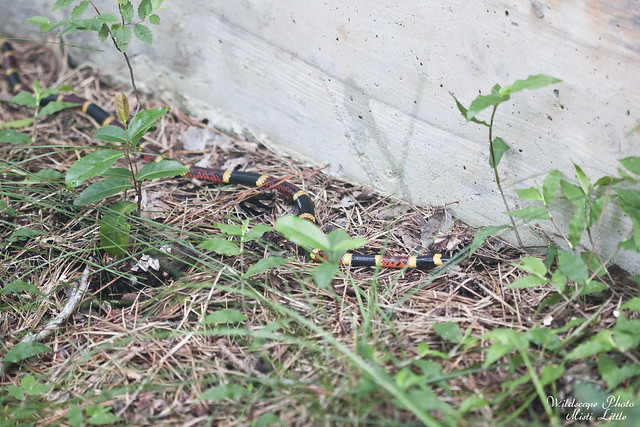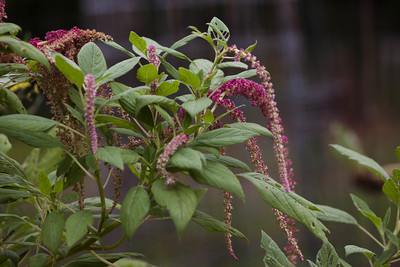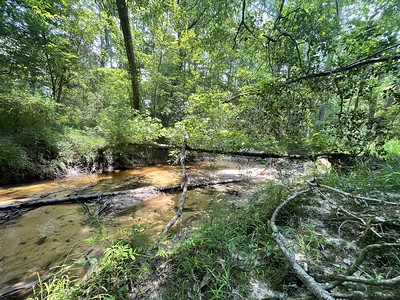Snakes: Friends Not Foes
Over the weekend a friend of mine had a snake in her yard which she ended up killing due to its being near where her dogs were located. She didn’t know if it was venomous or not at the time and later posted a photo of it which her friend identified as potentially a rat snake, to which I conconcurred it likely was. Now, I’m not writing this to pick on my friend, but it really was a bit of a tipping point for this post to be written as I’ve read several different items from other people in the last year about snakes being killed by people who felt that ‘A good snake is a dead snake’, or perhaps the perceived threat is not nearly as great as they believed it was.
So, this is my rant…snakes aren’t the foes we’ve been taught to think them to be.

Coral snake found in my yard last year. No, we didn’t kill it and haven’t seen it since, though I did see a small coral snake on a road in my neighborhood that had been run over.
Part of the human freak-out factor about snakes is how we’re raised and taught about snakes. They are the villain in Disney movies and snakes are almost unequivocally symbolized as evil, part of this going back to the Garden of Eden if you are raised in any of the Christian denominations (I’m not sure about other religions, anyone of another religion care to pitch in about snake portrayals in your religion?). There’s even potentially an evolutionary explanation, but then again maybe it’s just something we’re taught.
Now, outside of the U.S. and in the tropics there are definitely a few more snakes to be more wary off, but here in the United States there’s only a handful of the 100+ species to be concerned about (unless you are in south Florida, and well then, you’ve got your own problems. Pythons I’m talking about you. And Green Mambas. And Anacondas. But I digress. Yes, Miami you are your own little world.). And even then most states maybe only have one or two venomous snakes to worry about.
Before I go further, let’s talk venomous vs. poisonous. Snakes, if they are, they are venomous NOT poisonous. Venom is injected into your skin through a bite; if you eat something and it makes you sick that is poisonous (ie: that shady mushroom you misidentified while foraging).

Chris holding a rough green snake while on a hike.
First, it is good to know what species of snakes are here in North America. This site is a good place to start. This site lists venomous species by state and includes subspecies of rattlers, cottonmouths and other species. Next, learn what you might see in the habitat by you. If you live in suburbia you are less likely to be running into a rattlesnake than you would a garter snake. If you live near water, even a pond in suburbia, you could run into a cottonmouth or a non-venomous water snake (Nerodia sp.). If you plan on walking near a pond, watch where you walk near tall grass and poke a stick in the grass to make your presence known before entering to go fishing or any recreational activities near water. If you see a snake, move on somewhere else down the shore, don’t kill it.
There’s a great chance that if you see a snake once, you will probably not see it again unless it is nesting somewhere in your yard or if you have a healthy population of food for it to feast on (rats, mice, other rodents), and in that case maybe you do want it around. If it is a non-venomous snake and not posing a threat, leave it alone. If it is venomous consider trapping it yourself if you are comfortable and confident with it (but let it be known, this is when a lot of bites occur) or having someone else trap it and humanely release it. Of course having piles of wood or overgrown grass and shrubs can attract snakes, and wood piles especially provide a desirable shelter for them. Removing the piles or being cautious when working around these areas can reduce unwanted snake interactions.
Living in a rural area of course provides the greatest opportunity for having a snake encounter. This is where a mind-shift has to take place and understanding that you are sharing habitat with other animals, even if they are a little close for comfort. Definitely consider keeping a trap on hand if you know you are likely to see a venomous snake instead of going for the immediate reaction of killing it—unless of course its a life threatening situation—but if it isn’t, assess the ability safely to move it to another area if possible. You should also keep in mind that there are both venomous and non-venomous snake species that are protected either by state or federal laws, so if killing it isn’t necessary to protect someone (human or otherwise) you love, think twice before doing it.
A Google search has shown me multiple snake trapping methods, none of which I can really vouch for as I’ve not used them, but you can check them out for yourself to determine which might work best for you. The only time I have seen some kind of trap used was using one of the snake poles and putting it in a cloth bag to release elsewhere. And if you are squeamish about trapping one yourself, go ahead and see if there are any snake removal experts in your area and keep the number on hand, especially if you’ve seen snakes in your area before.
I don’t expect people to go running to snakes and wanting to hold them, I’m certainly not, but I do want people to start thinking twice about encounters with snakes and start removing the initial reaction of killing a snake because it is a snake. I’ve taken to doing this myself with spiders that I find in the house, attempting to capture them and put them outside instead of instantly squashing them. I’m just like most people, not overly fond of snakes and spiders on me, but I can certainly appreciate them for what they are and leave them be in instances in which they are not causing harm to me or anyone else.
With declining populations of snakes worldwide, its time to start educating ourselves on how not-so-scary snakes actually are, at least in the United States. Of the approximately 2500-3500 (I’m also seeing the numbers 7,000 to 8,000 on other sites, so I’m not sure what is correct) snake bites annually in the US, only about six people die every year from a venomous snake bite. Of course if you look at the first link in this paragraph you’ll see that the statistics do go up for those living in the rural tropics where access to antevenom is not available.
So, with all of this in mind, be aware of your where you live, where you are hiking or exploring, and learn to identify snakes in case you encounter venomous species. If the snake is not venomous and causing no harm, leave it alone. If it is identified to be venomous and you are uncomfortable with removing it, please attempt to have it removed professionally before killing it. The timber rattlesnake has potentially been extirpated from several northeastern states and is protected in others. The eastern diamondback is being considered as a potential candidate species for the USFWS endangered species list, and the eastern massasauga rattlesnake is also a federal candidate species.
Some interesting links I came across while writing this:
+CDC Venomous Snakes
+What To Do About Snakes: Humane Society
+Are Snake Populations In Widespread Decline?
+Sharing A Rural Farm With Snakes
+Snakes Populations Show Worldwide Decline
+Avoiding Snake Bites
+Two Rare Southwest Snakes Species Proposed for ESA Protection
+Snake Decline Likely In America, Too
And my helpful hint: If you are on the Appalachian Trail in Pennsylvania, don’t stow your boots under the shelter unless you want to enjoy a timber rattler curling up next to them!
I’ll leave you with the video of an eastern diamondback that I walked up on while on the Florida Trail in January of 2011 in Big Cypress National Preserve. Thankfully it let me know it was there and we stepped back and of course shot a video with zoom. I tried to find the video of another large diamondback we encountered in another area of Big Cypress but couldn’t find it. It was on a buggy trail then and a little more troublesome to get around, the first diamondback I’d ever seen. I remember it as being quite giant.



5 Comments
Erin
PREACH. There was a video going around this week showing a decapitated cottonmouth (I think, can’t remember this moment) biting itself, and all I could think was, why did someone cut its head off in the first place? If you have time to pull out your phone to take a video, your life was not likely in danger. Leave the snakes alone!
chel
Exactly what Erin said. Snakes don’t deserved to be abused simply because they aren’t cute and fluffy and willing to be friends wih us. They serve a huge purpose and they deserve to be left alone to do their thing. (I didn’t see the video she was talking about, but the whole description of it made me cry 🙁
Chris
Great post! I now have my snake up here with me (finally) and am in the process of getting my FIL to get past his fears and appreciate snakes for their beauty and their part in the food chain. Fear comes from ignorance. I’ve always worked hard at getting folks educated about snakes. Again…great post!
Patrice
Catching up on your blog! Didn’t you guys take a really cool video of a snake with the camera set up on its own on the AT?
Amy @ Tenth Acre Farm
Misti, I appreciate this post so much. I hadn’t realized how many people have the instant reaction to snakes of fear/danger/kill until we started our community garden. I was always taught to first have fascination and respect, and then in the rare 1% of times, perhaps fear secondarily, but rarely “kill” or “run”.
I also think people are simply uneducated in how important snakes are to our ecosystems. Some of them feed on rodents, while others can become food for some of our magnificent birds of prey such as hawks and owls.